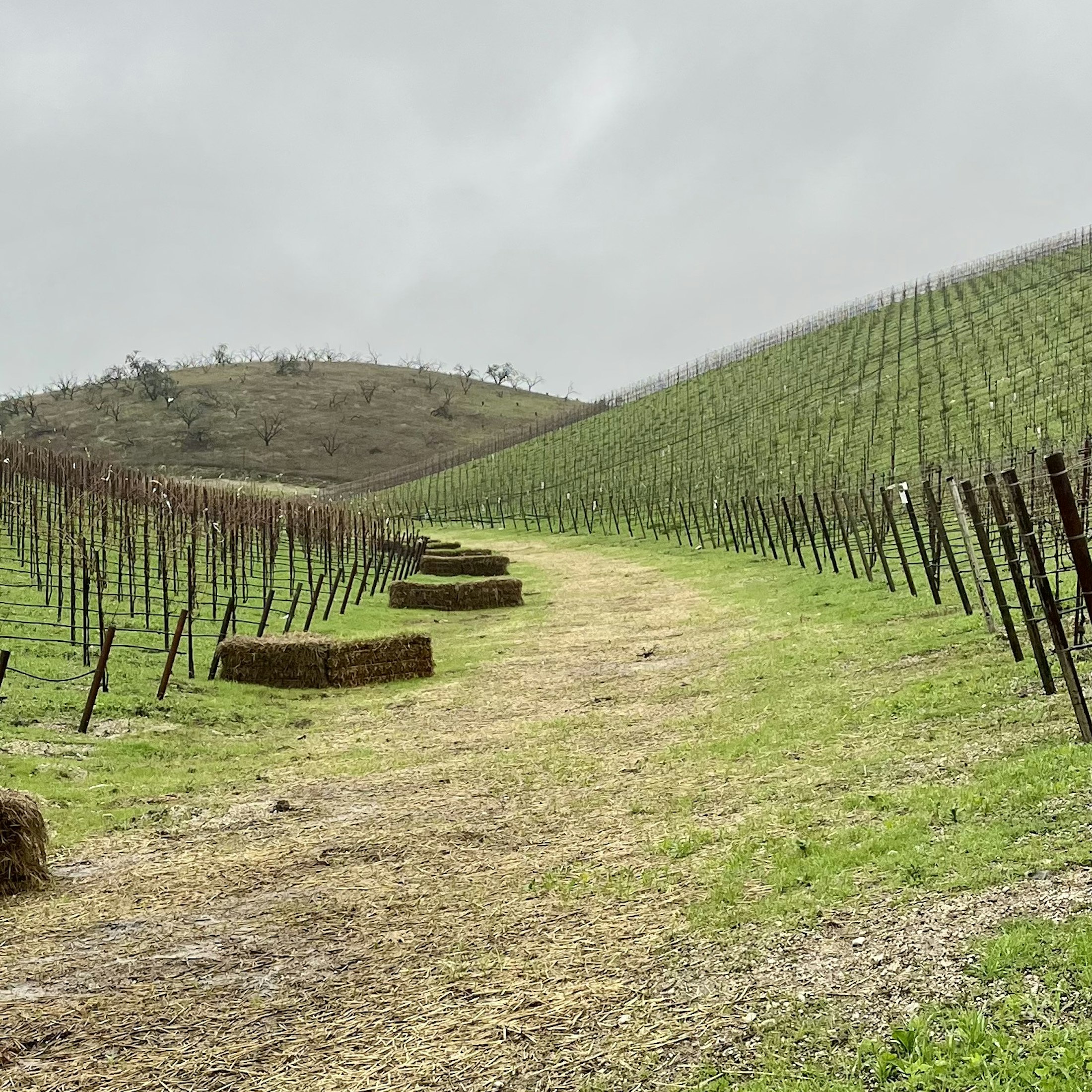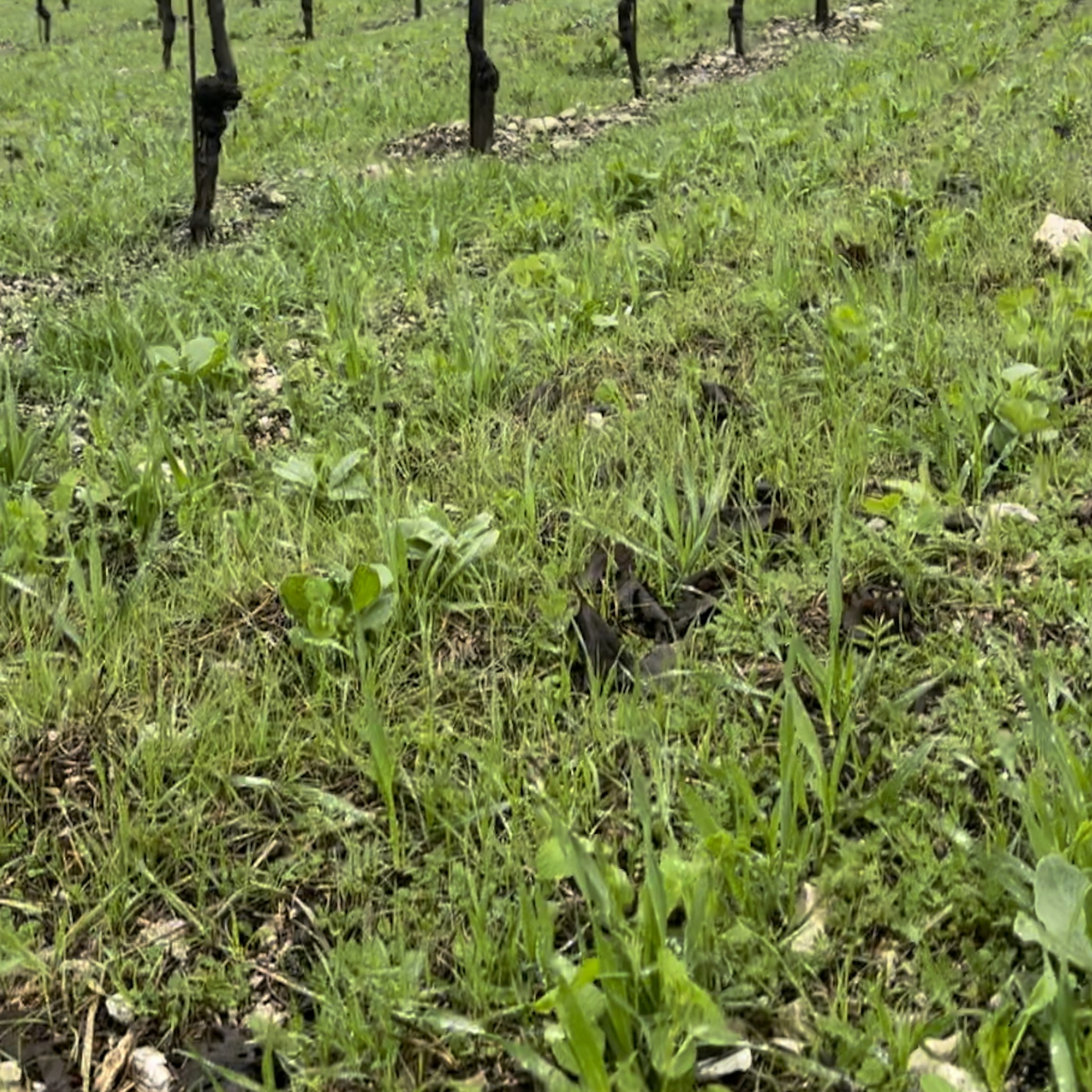Winter Observations In The Vineyard

Josh’s Update
Winter is a season of patience in the vineyard. We watch and wait, anxiously sitting on our hands, to ensure the new growing season is as bountiful and successful as it can be for our California winery.
The first rains we experienced in early December were so welcome as they gave a much-needed boost to our cover crop. Cover crop is a natural nitrogen builder; this year, we planted peas, legumes, and barley as our cover crop to nourish the vineyard soil (see photo below). This nourishment will give our grapes the best chance at successful yields this new growing season.
The rains aided in our efforts to spread additional nourishment in the form of compost throughout our fields. Compost is essential to build organic matter, and ultimately, healthier soils. We watched the rain drive the compost into the soil and are thankful for its assistance!

New Year Downpour
Early January brought a deluge of rain to California! For some, it was catastrophic, but for Thibido Vineyard, it was welcomed and managed. Since our early days of soil preparation for the vineyard planting, we have implemented various mechanisms of erosion control to preserve and protect our vineyard and the precious soil.
Heavy rains in 2018 and 2019 heightened our attention and demanded more efforts in proactive erosion control in place. Before every winter, we spread hay on the steepest slopes to slow water erosion. Our prolific cover crop significantly reduces erosion by dispersing the force of rainfall in the vineyard and encourage soil retention. In 2019 we added a dry well, or drainage pit, at the lowest point of our vineyard to retain and deter heavy runoff in heavy rains (see photo below). Because the vineyard has both steep and gently sloping hillsides, erosion control is a serious matter. We also maintain our diversion ditches and keep waddles staked in place year-round to assist in water runoff on the property. Thankfully, our efforts have paid off this winter and the vineyard has enjoyed a wet, damage-free rainy season.

Waiting on the Vineyard
We wait and assist as minimally as possible to allow the earth to do what it needs to prepare the soil for the next growing season. Our vines have gone into winter mode, wherein they focus on growing their root systems and building underground stability. The vine trunks store up carbohydrates in the winter to use later in the growing season.
If weeds arise during the winter season, we will rid them by hand hoeing. Usually, weed control is very minimal during the winter, but also essential as we do not want the weeds to pilfer vital soil nutrients away from the vines.
Finally, rodent control is another task we wait and watch. If rodents become abundant, we set traps and allow our natural predators to help eliminate rodents that damage the vines and make a home in our fields.
While we watch and wait, we aren’t idle; rather, we spend lots of time thinking and planning for the anticipated growing season. Specifically, I’m thinking about pruning. I may start pruning early this year, but it is all dependent on the weather. Pruning is an essential part of crop tending and planning. I also reflect on the previous year’s crop, which helps me estimate pruning techniques to ensure we hit our crop yield goals this year.
Overall, this is a quiet time in our grow cycle, but one that is so important to ensure our future growth is successful. We can’t wait to share more details as the seasons progress!